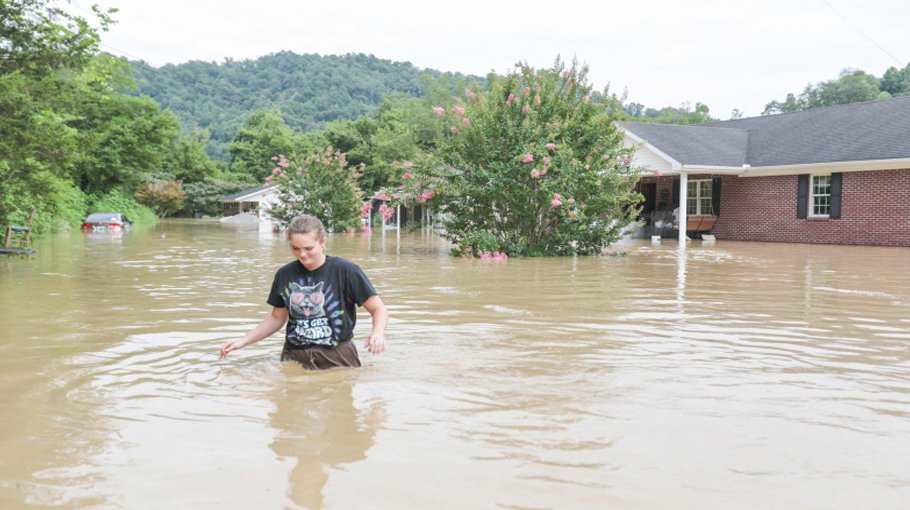Understanding The Impacts Of Dangerous Climate Whiplash On Cities

Table of Contents
Infrastructure Damage and Economic Losses from Climate Whiplash
The unpredictable nature of climate whiplash places immense strain on urban infrastructure, leading to substantial economic losses. The cascading effects of extreme weather events disrupt essential services and cripple economic activity.
Damage to Transportation Networks
Floods can render roads and rail lines impassable, while heatwaves can warp railway tracks and cause bridge collapses. Storms inflict damage on airports, delaying or canceling flights. The consequences are far-reaching:
- Increased insurance premiums: The rising cost of repairing and replacing damaged infrastructure leads to higher insurance premiums for both individuals and businesses.
- Disrupted supply chains: Damage to transportation networks disrupts the flow of goods and services, impacting businesses and consumers alike.
- Loss of tourism revenue: Damaged infrastructure and extreme weather events deter tourists, leading to significant losses for cities reliant on tourism.
Cities like Houston, following Hurricane Harvey, and New Orleans, after Hurricane Katrina, offer stark examples of the devastating impact of extreme weather on transportation networks, highlighting the immense costs of rebuilding and recovery.
Damage to Buildings and Utilities
Extreme temperature swings, from scorching heatwaves to freezing cold snaps, damage building materials and strain utility systems. Heavy precipitation overwhelms drainage systems, leading to flooding and water damage. The costs are staggering:
- Water damage repair: Flooding causes extensive damage to buildings, requiring costly repairs and renovations.
- HVAC system failures: Extreme temperatures put a heavy strain on heating, ventilation, and air conditioning (HVAC) systems, leading to frequent failures and high repair costs.
- Power grid outages: Storms and extreme weather can cause widespread power outages, disrupting essential services and impacting businesses.
The cumulative effect of such damage can lead to increased homelessness and displacement, as individuals lose their homes due to irreparable damage.
Public Health Challenges Posed by Climate Whiplash
The erratic shifts in weather patterns associated with climate whiplash pose significant risks to public health, particularly for vulnerable populations.
Heat-Related Illnesses and Mortality
Prolonged heatwaves, often followed by sudden cold snaps, increase the risk of heatstroke, dehydration, and other heat-related illnesses. These impacts are particularly severe for:
- Elderly individuals: Older adults are more susceptible to heat-related illnesses due to age-related physiological changes.
- Children: Children's bodies are less efficient at regulating temperature, making them vulnerable to heatstroke.
- Low-income communities: Individuals living in low-income communities often lack access to air conditioning and other heat mitigation measures.
Statistics from major cities show a clear correlation between heatwaves and increased mortality rates, underscoring the deadly consequences of climate whiplash.
Spread of Infectious Diseases
Extreme weather events create conditions favorable for the spread of infectious diseases. Flooding contaminates water sources, increasing the risk of waterborne diseases like cholera and typhoid. Changes in temperature and rainfall patterns alter the habitat and distribution of disease vectors, such as mosquitoes, leading to the spread of vector-borne diseases like Zika and dengue fever. The challenges of managing public health crises are magnified by the unpredictable nature of climate whiplash.
Social and Political Ramifications of Climate Whiplash
The impacts of climate whiplash extend beyond infrastructure and public health, creating significant social and political challenges.
Increased Social Inequality
Climate whiplash disproportionately affects marginalized communities, exacerbating existing social inequalities. These communities often lack the resources to cope with extreme weather events and are more vulnerable to displacement and loss of livelihoods.
- Access to essential services: Disruptions to essential services such as healthcare, housing, and transportation disproportionately impact vulnerable populations.
- Resource scarcity: Extreme weather events can lead to resource scarcity, further straining already limited resources in marginalized communities.
- Displacement and migration: Damage to homes and infrastructure can lead to displacement and migration, placing additional strain on resources and social cohesion.
Political and Governance Challenges
City governments face immense challenges in responding to the frequent and unpredictable extreme weather events associated with climate whiplash. Effective responses require:
- Improved disaster preparedness: Cities need robust disaster preparedness plans that account for the unpredictable nature of climate whiplash.
- Enhanced response planning: Effective response plans are crucial for minimizing the impact of extreme weather events and ensuring the safety of residents.
- Long-term adaptation strategies: Investing in long-term adaptation strategies is critical for mitigating the impacts of climate whiplash and building more resilient cities.
Conclusion
The impacts of climate whiplash on cities are multifaceted and far-reaching, encompassing significant infrastructure damage, substantial economic losses, serious public health risks, and profound social and political ramifications. Understanding the interconnected nature of these impacts is crucial for developing effective strategies to mitigate the effects of climate change and improve urban resilience. Understanding the impacts of dangerous climate whiplash is crucial for building more resilient cities. Learn more about climate adaptation strategies and take action today to protect your community from the escalating threats of climate change.

Featured Posts
-
 Hailee Steinfeld And Josh Allens Relationship Happy Together
May 28, 2025
Hailee Steinfeld And Josh Allens Relationship Happy Together
May 28, 2025 -
 Hailee Steinfeld And Josh Allen Baby On The Way
May 28, 2025
Hailee Steinfeld And Josh Allen Baby On The Way
May 28, 2025 -
 Bethlehem Election 2024 Negative Campaigning Takes Center Stage
May 28, 2025
Bethlehem Election 2024 Negative Campaigning Takes Center Stage
May 28, 2025 -
 Source Taylor Swift Travis Kelce Relationship Doesnt Match Josh Allens Ideal
May 28, 2025
Source Taylor Swift Travis Kelce Relationship Doesnt Match Josh Allens Ideal
May 28, 2025 -
 Rose Rm Jimin Ateez And Stray Kids K Pops Amas Nominations
May 28, 2025
Rose Rm Jimin Ateez And Stray Kids K Pops Amas Nominations
May 28, 2025
